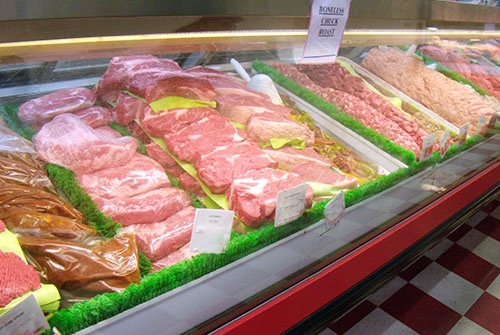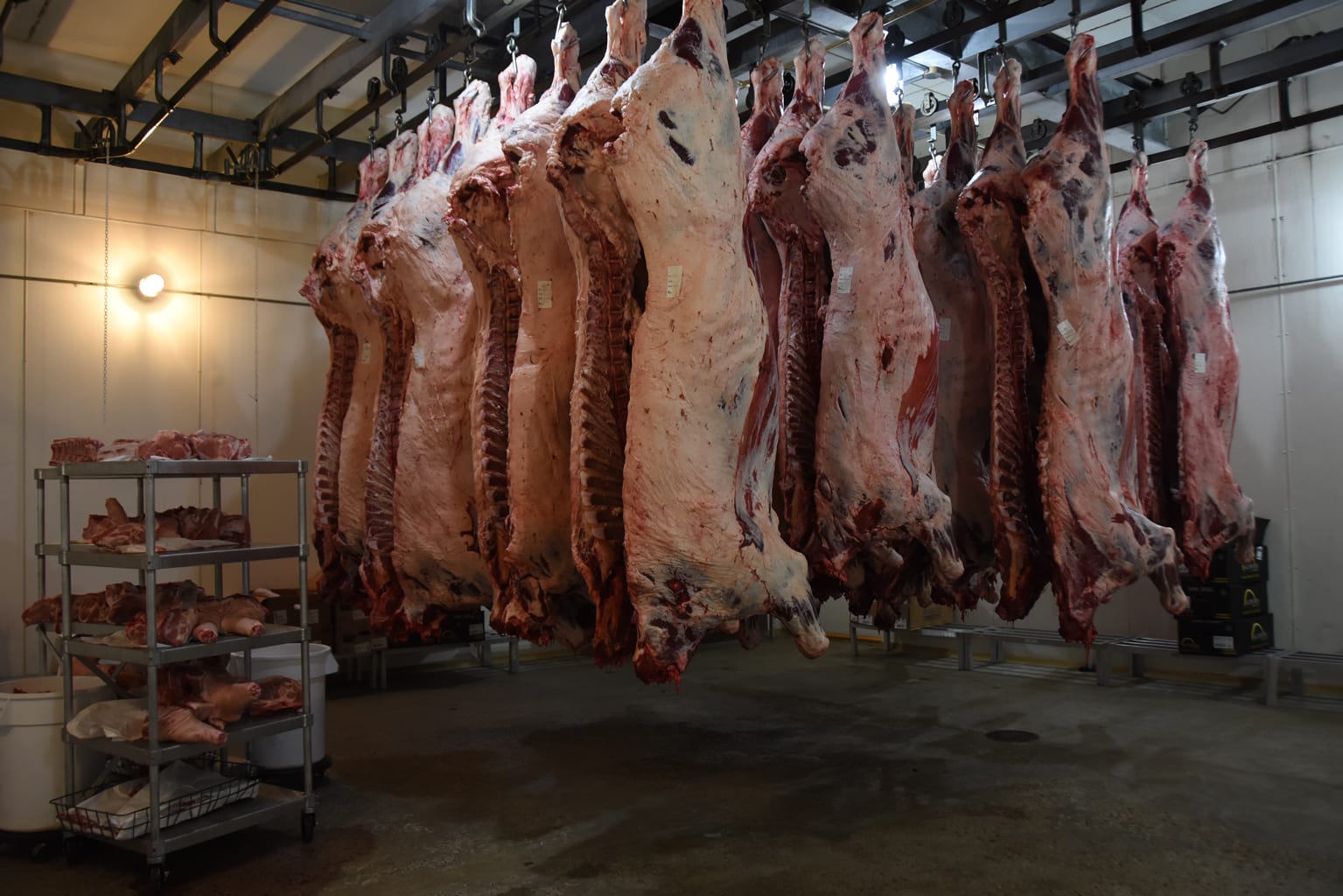Why Bagley Farms Meat Market Edwardsville IL Is the Best Option for Quality Meats
Why Bagley Farms Meat Market Edwardsville IL Is the Best Option for Quality Meats
Blog Article
Reveal the Art of the Butcher's Cut in a Modern Meat Market
In the ever-evolving landscape of contemporary meat markets, the butcher's cut has transcended its traditional roots, combining olden craftsmanship with modern practices. What genuinely sets the modern-day butcher apart is their ability to create a deeper connection in between consumers and the beginnings of their meat.
Evolution of Butchery Strategies
The evolution of butchery techniques mirrors a rich tapestry of technology and adaptation driven by innovations in innovation, adjustments in consumer need, and a much deeper understanding of meat science. Historically, butchery was a craft passed down via generations, with methods refined over centuries to make best use of yield and taste. Nevertheless, the industrial revolution ushered in automation, changing conventional techniques and allowing massive handling.
The mid-20th century saw butchery strategies further refined by scientific understandings right into muscular tissue biology and meat aging, enhancing both inflammation and preference. Developments like vacuum packaging and refrigeration prolonged item shelf-life, permitting butchers to expand offerings and boost high quality control. This duration additionally noted the surge of specialized equipment, such as band saws and meat slicers, which enhanced precision and effectiveness in meat handling.

The 21st century has presented digital technology right into the butchery world. Digital systems currently assist in monitoring animal provenance and enhancing cuts to satisfy certain client preferences. Additionally, a resurgence in artisanal butchery has arised, mixing standard skills with modern knowledge to deal with consumers looking for honest and sustainable meat options. This advancement emphasizes a vibrant interplay between custom and technology, conference contemporary needs while protecting the craft's heritage.
Comprehending Meat Cuts
Understanding the ins and outs of meat cuts is necessary for both butchers and consumers looking for quality and worth. Each cut comes from a various component of the animal, passing on unique flavors, structures, and food preparation approaches - bagley farms meat market edwardsville il. Mastery of these distinctions not only enhances cooking experiences however likewise maximizes the energy of each carcass. For butchers, exact cuts mirror skill and regard for the craft, ensuring very little waste and optimal return.

Understanding muscular tissue structure is critical; muscular tissues utilized much more frequently by the pet have a tendency to be tougher and are best matched for slow-moving cooking approaches, while less-used muscle mass, like those found in the loin, are extra tender and suitable for cooking or roasting. Experience with these distinctions equips customers to make educated selections, improving their culinary undertakings.
Choosing Quality Meat
Selecting the right meat includes even more than just choosing an aesthetically appealing piece from the display screen. The art of selecting quality meat needs a critical eye and knowledge of certain attributes that symbolize quality and excellence.
Secondly, take into consideration the marbling, which describes the white flecks of fat within the muscle mass. Appropriate marbling is a key sign of inflammation and taste, as it melts during cooking, improving the meat's juiciness. Bear in mind, greater marbling commonly associates with superior high quality cuts, such as USDA Prime.
Appearance is an additional essential factor; meat should feel strong to the touch, not see slimed or extremely soft. In addition, be conscious of the aroma. Fresh meat needs to have a tidy, neutral scent, free from any sour or off-putting odors.
Matching Cuts With Cooking Methods

On the other hand, tougher cuts like brisket and chuck roast are abundant in collagen, which breaks down into jelly when prepared gradually. These cuts are optimal for braising or slow-moving roasting, allowing the meat to soften with time and establish deep, intricate tastes. Cuts such as short ribs and pork shoulder get on well with slow-cooking methods, where prolonged cooking times transform their robust structures into succulent meals.
Lamb shanks and oxtail, which need extended cooking to tenderize, are ideal candidates for stewing or slow simmering. These methods coax out abundant, hearty flavors while maintaining dampness. By understanding the unique qualities of each cut, chefs and home cooks alike can boost their cooking creations, making sure each recipe is both satisfying and memorable.
The Butcher's Role Today
Browsing the evolving landscape of the modern-day meat market, the butcher's role today expands beyond mere prep work of cuts. Contemporary butchers are culinary craftsmens, educators, and supporters for sustainable techniques. They connect the gap in between the farm and the fork by making certain ethical sourcing, recognizing pet husbandry, and focusing on transparency in the supply chain. This shift mirrors the growing customer demand for high quality over quantity, where provenance and animal well-being are critical.
In enhancement to crafting accurate cuts, butchers currently involve her latest blog directly with consumers, offering cooking recommendations and customizing options to suit specific demands and preferences. Their know-how in meat aging, marbling, and flavor profiles equips customers to make enlightened decisions, improving their cooking experiences. This individualized solution exhibits the butcher's evolving role as a trusted expert in the cooking area.
Moreover, butchers are critical in lessening waste, making use of entire animals to produce varied items such pop over to this web-site as sausages and supplies. This comprehensive method not only appreciates the pet yet also aligns with contemporary sustainability goals. This way, the modern-day butcher embodies both tradition and development, adapting to an ever-changing market while protecting the virtuosity and honesty of their craft.
Conclusion
Mastery in recognizing diverse meat cuts and quality indicators empowers butchers to offer enlightened suggestions, lining up details cuts with optimum food preparation approaches. By recognizing historical practices while welcoming modern demands, the butcher's duty stays vital in today's advanced meat market.
Report this page